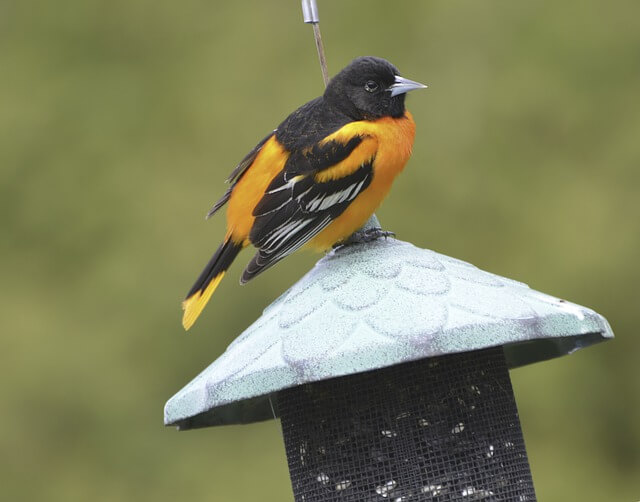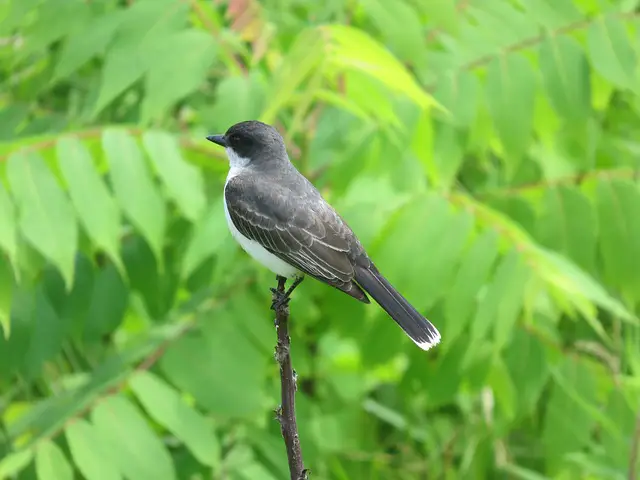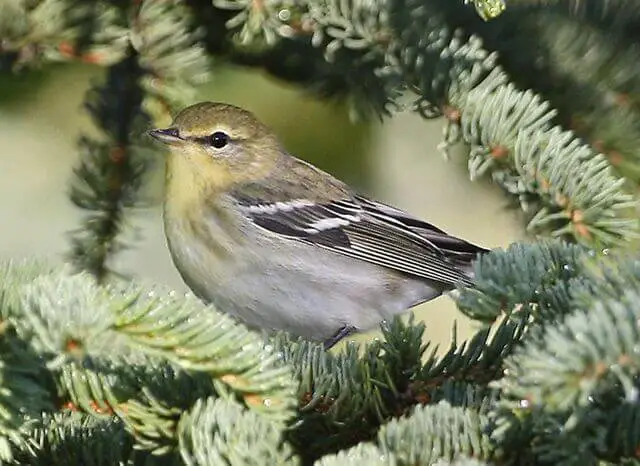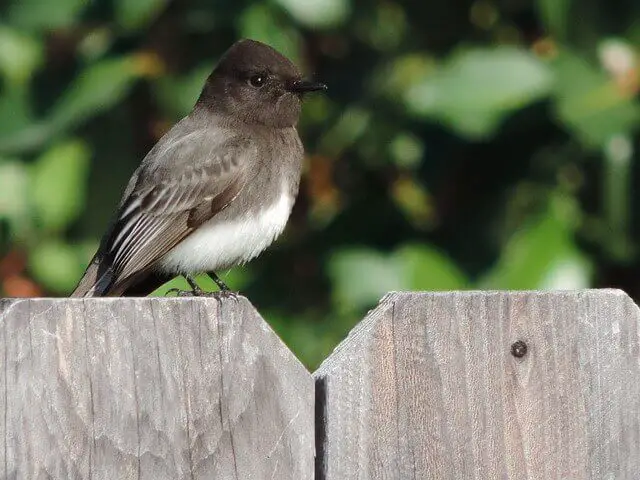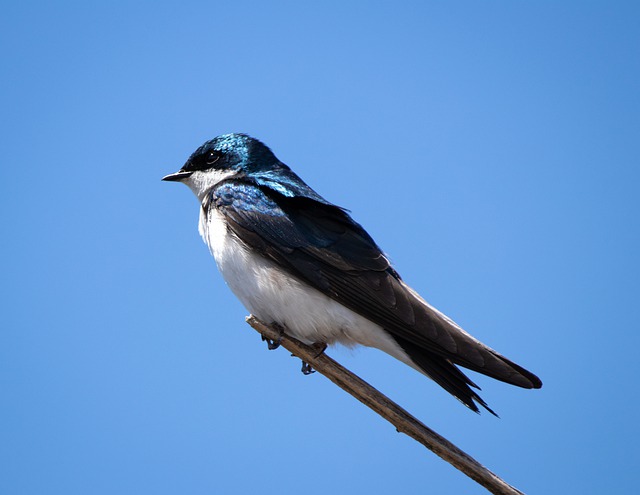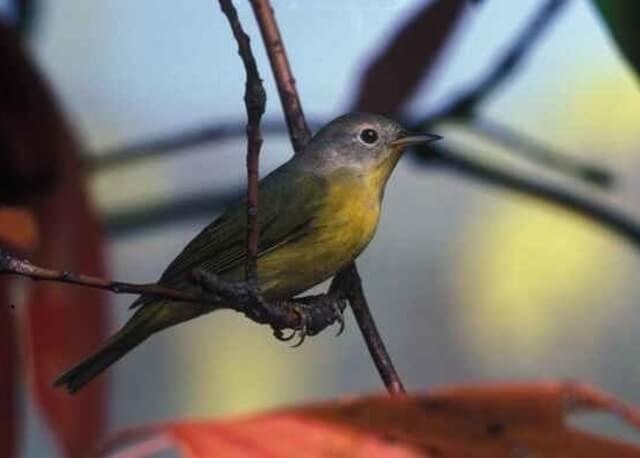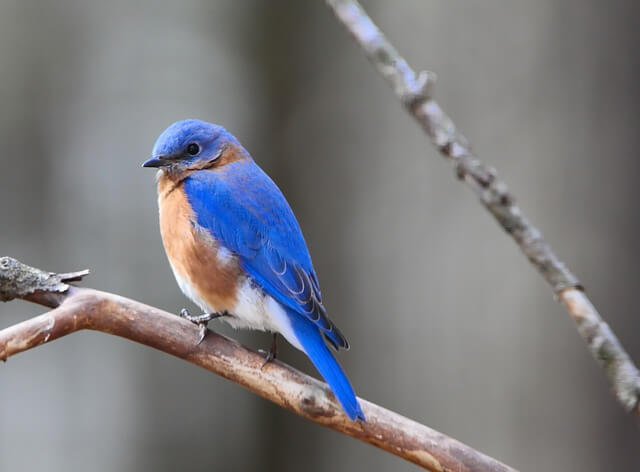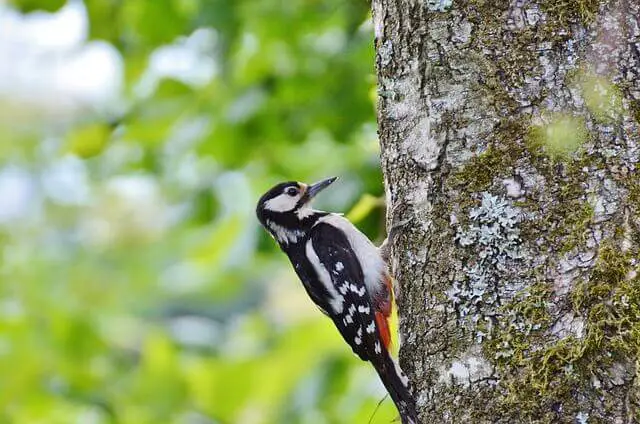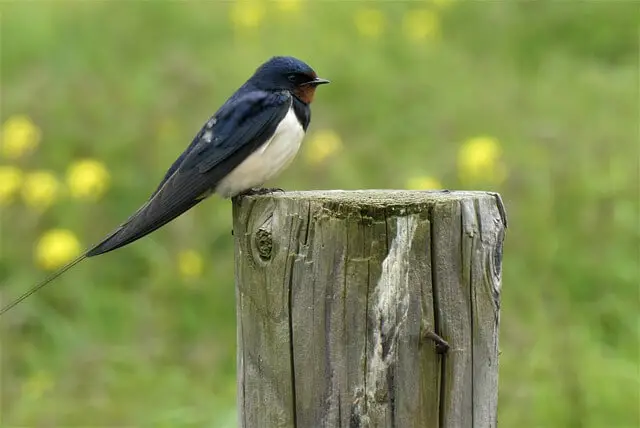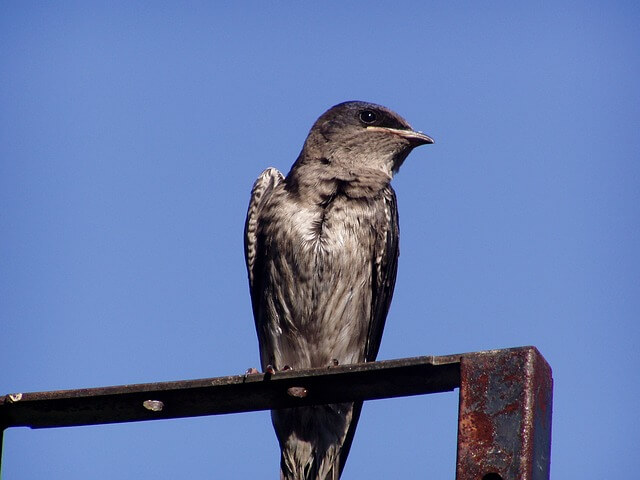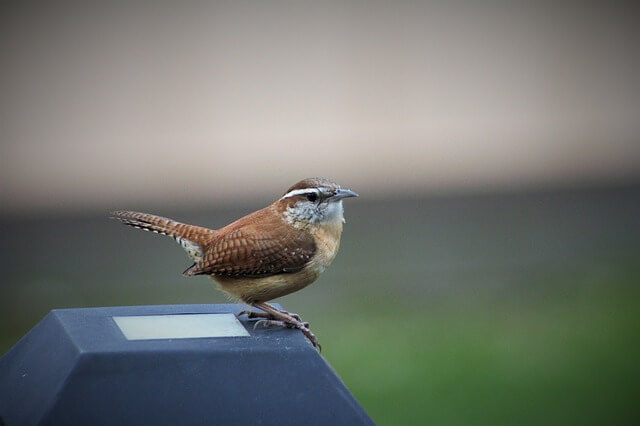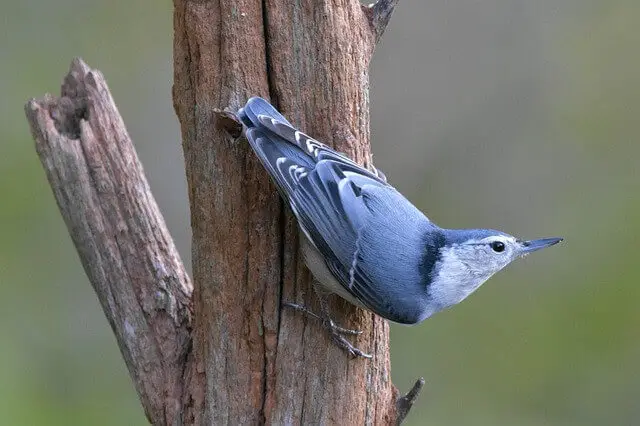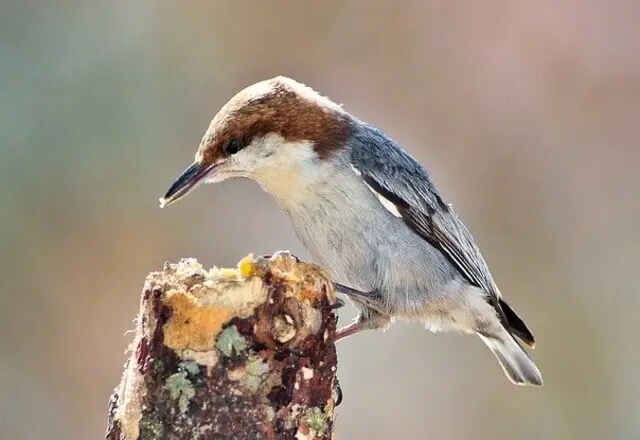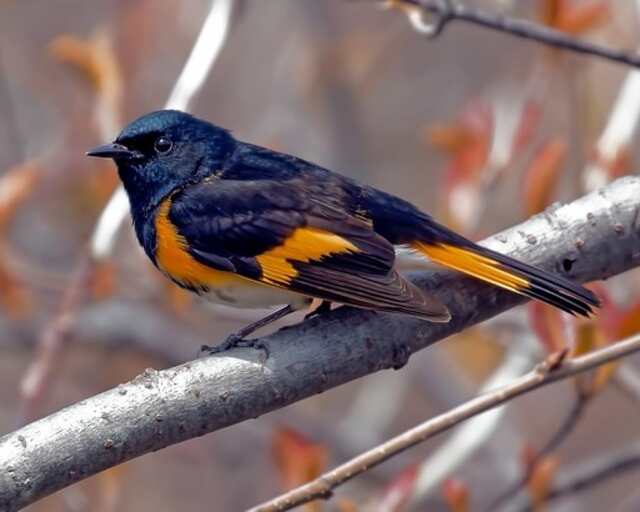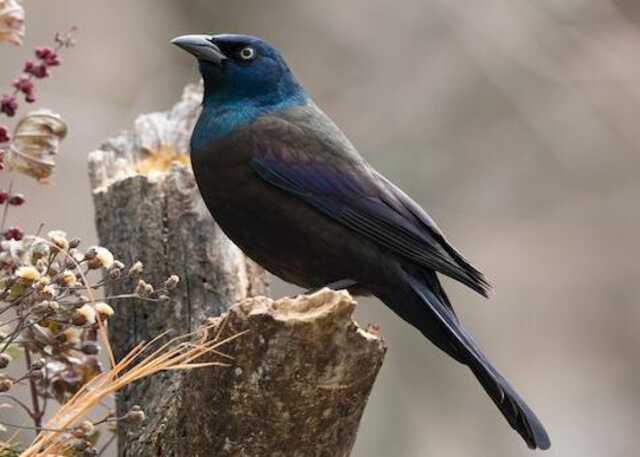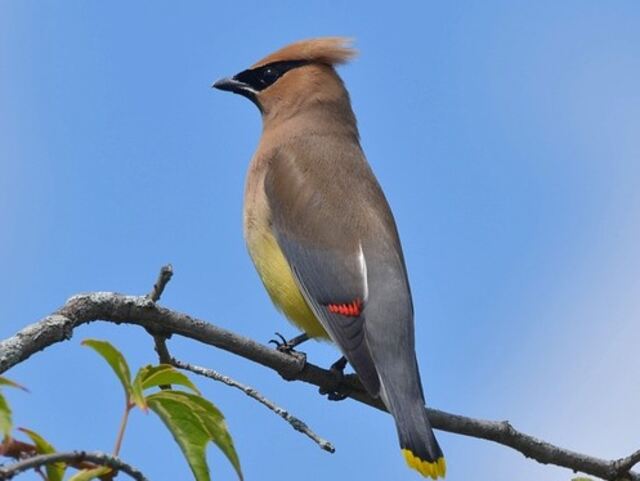Are you tired of pesky mosquitoes ruining your outdoor enjoyment? Nature has a solution: birds that love to feast on these irritating insects. In this article, we’ll introduce you to 20 incredible bird species that naturally help control mosquito populations. Plus, we’ll share effective tips on how to attract these mosquito-eating birds to your yard quickly and easily. Say goodbye to mosquitoes and hello to a more pleasant, bug-free outdoor space!
Table of Contents
- 1 Birds That Eat Mosquitoes
- 1.1 Baltimore Oriole
- 1.2 Northern Cardinal
- 1.3 Eastern Kingbird
- 1.4 Black-capped Chickadee
- 1.5 Blackpoll Warbler
- 1.6 Chipping Sparrow
- 1.7 Eastern Phoebe
- 1.8 Tree Swallow
- 1.9 American Robin
- 1.10 Nashville Warbler
- 1.11 Eastern Bluebird
- 1.12 Red-headed Woodpecker
- 1.13 Barn Swallow
- 1.14 Purple Martin
- 1.15 Carolina Wren
- 1.16 White-Breasted Nuthatch
- 1.17 Brown-headed Nuthatch
- 1.18 American Redstart
- 1.19 Common Grackle
- 1.20 Cedar Waxwing
- 2 How to Attract Birds that Eat Mosquitoes?
- 3 Frequently Asked Questions
- 3.1 Do birds eat mosquito larvae?
- 3.2 How do birds get rid of mosquitoes?
- 3.3 How many mosquitoes do birds eat?
- 3.4 Do birds keep mosquitoes away?
- 3.5 How do I keep mosquitoes from breeding in my bird bath?
- 3.6 Do hummingbirds eat mosquitoes?
- 3.7 Do starlings eat mosquitoes?
- 3.8 Do house sparrows eat mosquitoes?
- 3.9 Do starlings eat mosquitoes?
- 3.10 Do finches eat mosquitoes?
- 3.11 Do chickens eat mosquitoes?
- 3.12 Do ducks eat mosquitoes?
- 4 Conclusion
- 5 Author
Birds That Eat Mosquitoes
Baltimore Oriole
| Length | Weight | Wingspan | Range | Habitat |
|---|---|---|---|---|
| 6.7-8.7 in | 1-1.4 oz | 9.1-11.4 in | Eastern North America | Deciduous woodlands, gardens, and orchards |
The Baltimore Oriole (Icterus galbula) is a stunning bird known for its vibrant orange plumage and sweet, melodious song. Beyond its aesthetic appeal and musical talents, the Baltimore Oriole serves as a valuable ally in mosquito control.
These orioles are highly skilled insect hunters, and during the breeding season, insects, including mosquitoes, become a significant part of their diet. Baltimore Orioles deftly capture flying insects on the wing and also glean them from foliage, making them effective natural pest controllers.
As they forage through gardens and woodlands, their mosquito-eating habits not only benefit ecosystems but also provide a pleasant and practical reason to welcome them into our surroundings.
Northern Cardinal
| Length | Weight | Wingspan | Range | Habitat |
|---|---|---|---|---|
| 8.3-9.3 in | 1.4-3.4 oz | 9.8-12.2 in | Eastern and Central North America | Woodlands, gardens, and shrubby areas |
The Northern Cardinal (Cardinalis cardinalis) is a familiar and cherished bird across North America known for its striking red plumage and distinctive crest. Beyond its visual appeal, the Northern Cardinal is also a valuable ally in the battle against mosquitoes.
Cardinals are omnivorous and incorporate insects, including mosquitoes, into their diet, especially during the breeding season when they need protein for their growing chicks. They typically forage for insects on leaves, branches, and in low vegetation, making them efficient mosquito hunters.
Their melodious songs and vibrant appearance add a delightful touch to backyard birdwatching, making them a welcome presence in many neighborhoods.
While the Northern Cardinal’s primary diet consists of seeds and fruits, their appetite for mosquitoes and other insects makes them an essential contributor to natural pest control in their habitats.
Eastern Kingbird
| Length | Weight | Wingspan | Range | Habitat |
|---|---|---|---|---|
| 7.5-9.1 in | 1.1-1.6 oz | 12.2-13 in | North and Central America | Open habitats, often near water |
The Eastern Kingbird (Tyrannus tyrannus) is a fearless and agile aerial predator renowned for its mosquito-hunting prowess. With its sleek gray plumage and distinctive white band at the tip of its tail, the Eastern Kingbird is a common sight in open habitats, such as fields, meadows, and along water bodies.
These birds are aptly named “kingbirds” for their dominant and fearless nature. During the breeding season, Eastern Kingbirds actively patrol their territories, using their sharp eyesight and quick maneuverability to catch flying insects, including mosquitoes.
They often perch on exposed branches or power lines, making aerial sallies to capture prey. Their vital role in controlling mosquito populations is appreciated not only by bird enthusiasts but also by those seeking relief from these pesky insects during the summer months.
Black-capped Chickadee
| Length | Weight | Wingspan | Range | Habitat |
|---|---|---|---|---|
| 4.7-5.9 in | 0.3-0.5 oz | 6.3-8.3 in | Northern North America | Mixed woodlands and gardens |
The Black-capped Chickadee (Poecile atricapillus) is a charismatic and highly adaptable bird that offers a helping hand in keeping mosquito populations in check. These delightful little birds are a common sight across North America, from forests and woodlands to suburban backyards.
Black-capped chickadees have a voracious appetite for insects, including mosquitoes, which form an essential part of their diet, especially during the breeding season. With their acrobatic flight and keen eyesight, these chickadees expertly capture flying insects mid-air or glean them from leaves and twigs.
Their charming appearance and cheerful “chick-a-dee-dee-dee” calls make them a favorite among birdwatchers, while their mosquito-hunting prowess makes them valuable allies in reducing the annoyance of these pesky insects during the warmer months.
Blackpoll Warbler
| Length | Weight | Wingspan | Range | Habitat |
|---|---|---|---|---|
| 4.7-5.1 in | 0.3-0.4 oz | 7.5-8.7 in | North America | Boreal and spruce-fir forests |
The Blackpoll Warbler (Setophaga striata) is a remarkable migratory songbird that boasts an extraordinary feat of endurance. While these warblers may not primarily feed on mosquitoes, their incredible long-distance migrations indirectly contribute to mosquito control.
During their epic journey, Blackpoll Warblers undertake one of the most impressive migrations of any North American songbird, flying from their breeding grounds in northern North America to wintering areas in South America.
Along the way, they consume a variety of insects, including mosquitoes, as part of their diet. Although they are not mosquito specialists, the sheer numbers of insects they consume collectively make them ecological contributors in reducing mosquito populations as they traverse the continent.
Their migratory behavior and vital role in maintaining the balance of various insect populations make Blackpoll Warblers a fascinating and valuable species in the avian world.
Chipping Sparrow
| Length | Weight | Wingspan | Range | Habitat |
|---|---|---|---|---|
| 4.7-5.5 in | 0.4-0.5 oz | 7.5-9.1 in | North and Central America | Open woodlands, gardens, and grasslands |
The Chipping Sparrow (Spizella passerina) is a charming, small bird with a big appetite for insects, including mosquitoes. Found across North America, these little sparrows are known for their distinctive rusty-crowned heads during the breeding season.
Chipping sparrows are ground-foragers, using their sharp eyes and quick movements to capture insects, including mosquito larvae and adults, from low vegetation and grassy areas.
Their insect-rich diet not only contributes to keeping mosquito numbers in check but also showcases the vital role these unassuming birds play in balancing local ecosystems.
Whether perched on a branch or hopping on the ground, Chipping Sparrows are active hunters, making them valuable allies in the battle against mosquito-borne nuisances.
Eastern Phoebe
| Length | Weight | Wingspan | Range | Habitat |
|---|---|---|---|---|
| 5.9-7.1 in | 0.5-0.7 oz | 9.8-11 in | Eastern North America | Riparian areas, bridges, and buildings |
The Eastern Phoebe (Sayornis phoebe) is a charming, insectivorous bird that contributes to mosquito control in its habitat. Found in a range of environments, from woodlands to urban areas, these birds are known for their distinctive habit of “flycatching.”
Eastern phoebes perch on branches or other elevated spots, watching for flying insects, including mosquitoes, to pass by. When they spot prey, they launch into the air to catch it with precision, then return to their perch.
This hunting technique makes them effective mosquito hunters and valuable allies for pest management. Eastern phoebes are not only beneficial for reducing mosquito populations but also add their sweet, melodious calls to the soundscape of their surroundings, delighting birdwatchers and nature enthusiasts alike.
Tree Swallow
| Length | Weight | Wingspan | Range | Habitat |
|---|---|---|---|---|
| 5.5-6.7 in | 0.9-1.2 oz | 11.4-13 in | North and Central America | Open habitats near water |
The Tree Swallow (Tachycineta bicolor) is a graceful aerial acrobat that contributes to mosquito control in wetland and open habitat ecosystems. Known for their stunning iridescent blue-green plumage, tree swallows are highly skilled at capturing insects on the wing, including mosquitoes.
With their agile flight patterns, they zip through the air, performing aerial maneuvers to snatch mosquitoes and other small flying insects. During the breeding season, tree swallows actively hunt for these pests to feed their hungry nestlings.
Their presence in marshes, meadows, and near water bodies not only adds to the beauty of these landscapes but also serves as a natural pest control measure, helping to keep mosquito populations in check.
Tree swallows are a testament to the delicate balance of nature, where beauty and functionality coexist in the avian world.
American Robin
| Length | Weight | Wingspan | Range | Habitat |
|---|---|---|---|---|
| 9.1-11 in | 2.7-3 oz | 12.2-15 in | North America | Varied, including woodlands and gardens |
American Robins (Turdus migratorius) are iconic birds known for their cheerful presence in gardens and lawns. While they are primarily associated with earthworms and fruits, they are opportunistic feeders that won’t pass up a chance to snack on mosquitoes and other insects when they come across them.
During the breeding season, when they need protein for themselves and their young, American Robins will actively forage for insects, including mosquito larvae, in damp areas like lawns and puddles.
Their distinctive orange-red breasts and melodious songs make them a beloved sight and sound in suburban and urban landscapes.
In this way, American Robins contribute not only to the joy of birdwatchers but also to the natural regulation of mosquito populations in our neighborhoods.
Nashville Warbler
| Length | Weight | Wingspan | Range | Habitat |
|---|---|---|---|---|
| 4.3-4.7 in | 0.2-0.4 oz | 6.7-7.9 in | North and Central America | Boreal forests, mixed woodlands |
The Nashville Warbler (Leiothlypis ruficapilla) is a small, migratory songbird known for its insect-eating prowess. During the breeding season, these warblers forage actively among tree branches and foliage, gleaning insects such as mosquitoes from the leaves.
Their diet also includes spiders and other small invertebrates. Nashville warblers’ olive-green plumage and distinctive yellow throat and eye ring make them stand out among warbler species.
Their migratory behavior takes them to North American forests during the summer, where they contribute to mosquito control while adding their melodious calls to the woodland chorus.
These charming warblers exemplify the delicate balance between birds and the insect world, demonstrating how nature’s interconnected web keeps mosquito populations in check.
Eastern Bluebird
| Length | Weight | Wingspan | Range | Habitat |
|---|---|---|---|---|
| 6.3-8.3 in | 0.7-1.0 oz | 9.8-12.6 in | Eastern North America | Open woodlands and meadows |
The Eastern Bluebird (Sialia sialis) is not only known for its striking azure plumage but also for its valuable role in keeping mosquito populations in check. These small thrushes are often found in open woodlands, gardens, and suburban areas across eastern North America.
While their primary diet consists of insects like beetles, caterpillars, and grasshoppers, they readily consume flying insects, including mosquitoes, especially during the breeding season when protein-rich food is crucial for their young nestlings.
Eastern bluebirds are efficient aerial hunters, darting from perches to capture mosquitoes in mid-air. With their delightful appearance and mosquito-munching capabilities, Eastern Bluebirds are cherished residents of many regions and contribute to a more pleasant outdoor experience for humans.
Red-headed Woodpecker
| Length | Weight | Wingspan | Range | Habitat |
|---|---|---|---|---|
| 7.5-9.1 in | 2.0-3.4 oz | 16.1-17.3 in | Eastern and Central North America | Deciduous woodlands and open country |
The Red-headed Woodpecker (Melanerpes erythrocephalus) is a striking bird known for both its distinctive appearance and its appetite for insects, including mosquitoes. This medium-sized woodpecker boasts a striking crimson head, pure white belly, and a bold black back and wings.
They are often found in open woodlands, orchards, and along the edges of forests. Red-headed woodpeckers are skilled hunters, catching insects in flight or plucking them from tree trunks and branches.
Their insect-rich diet, which includes mosquitoes, contributes to local pest control and makes them valuable members of their ecosystems. With their striking colors and active foraging behavior, Red-headed Woodpeckers are not only effective insect hunters but also a joy to observe in the wild.
Barn Swallow
| Length | Weight | Wingspan | Range | Habitat |
|---|---|---|---|---|
| 6.7-7.5 in | 0.6-0.7 oz | 12.6-13.4 in | Worldwide | Open habitats near water |
The Barn Swallow (Hirundo rustica) is a highly skilled and agile aerial insectivore known for its mosquito-hunting prowess. With its distinctive long, pointed wings and deeply forked tail, this bird is built for fast and agile flight.
Barn swallows can be found in a variety of habitats, from open fields to barns and structures near water, where mosquitoes and other flying insects thrive. They are often seen swooping and darting through the air, catching mosquitoes in mid-flight with remarkable precision.
Their voracious appetite for insects, including mosquitoes, makes them valuable natural pest controllers. Barn swallows are not only a welcome sight for birdwatchers but also play a vital role in helping to reduce mosquito populations, making them a beneficial species for both ecosystems and humans.
Purple Martin
| Length | Weight | Wingspan | Range | Habitat |
|---|---|---|---|---|
| 7.5-8.7 in | 1.9-2.8 oz | 15.7-16.1 in | North and Central America | Open habitats near water |
The Purple Martin (Progne subis) is a popular bird species cherished by many for its remarkable mosquito-eating abilities. These sleek, iridescent-purple swallows are a common sight across North America, often nesting in specially designed martin houses provided by enthusiasts.
Purple Martins are true aerial acrobats, spending much of their time in flight as they forage for insects, including mosquitoes, on the wing. Their agile and swift movements enable them to capture mosquitoes with precision.
By attracting Purple Martins to their yards, people not only enjoy their captivating presence but also benefit from natural mosquito control, making these birds valuable allies in the ongoing battle against these pesky insects.
Carolina Wren
| Length | Weight | Wingspan | Range | Habitat |
|---|---|---|---|---|
| 4.7-5.1 in | 0.3-0.4 oz | 6.7-7.5 in | Eastern North America | Woodlands, gardens, and shrubby areas |
Carolina Wrens (Thryothorus ludovicianus) are charming and vocally expressive birds found throughout the eastern United States. While their sweet, melodious songs are well-known, Carolina wrens also contribute to pest control by consuming insects, including mosquitoes.
These adaptable little birds are often seen foraging in gardens, shrubs, and wooded areas, where they search for small invertebrates. Mosquitoes are among the many insects on their menu.
Carolina wrens’ insatiable appetite for these pests makes them valuable allies for homeowners looking to keep mosquito populations in check.
Their delightful presence and knack for insect hunting make them a welcome addition to any backyard, where they help maintain a balanced and harmonious ecosystem.
White-Breasted Nuthatch
| Length | Weight | Wingspan | Range | Habitat |
|---|---|---|---|---|
| 5.5-6.2 in | 0.6-1.0 oz | 7.9-10.2 in | North America | Deciduous woodlands and forests |
The White-breasted Nuthatch (Sitta carolinensis) is a delightful and distinctive bird known for its unique foraging habits. These small, agile birds are often seen spiraling headfirst down the trunks of trees, probing for insects, including mosquitoes, hiding in the bark.
Their strong, pointed bills enable them to extract prey with precision. White-breasted nuthatches are a year-round resident in many regions, making them valuable allies in mosquito control efforts.
While they primarily feed on insects, they also incorporate seeds and nuts into their diet during the non-breeding season.
These adaptable birds are a testament to nature’s efficiency, contributing to both healthy ecosystems and the reduction of pesky mosquito populations in woodlands and backyard habitats alike.
Brown-headed Nuthatch
| Length | Weight | Wingspan | Range | Habitat |
|---|---|---|---|---|
| 3.9-4.3 in | 0.3-0.4 oz | 7.1-8.7 in | Southeastern United States | Pine forests and woodlands |
The Brown-headed Nuthatch (Sitta pusilla) is a charming and industrious bird known for its unique foraging habits, which include snacking on mosquitoes. These pint-sized nuthatches are often found in pine forests across the southeastern United States.
With their distinctively blue-gray plumage, brown caps, and cheerful demeanor, they are a delight to observe. Brown-headed nuthatches possess specialized foraging techniques, often hanging upside-down from tree branches as they explore for insects, including mosquitoes, hidden within bark crevices.
Their knack for hunting these pesky insects makes them valuable contributors to pest control in their woodland habitats.
These charismatic little birds exemplify how various avian species play vital roles in maintaining ecological harmony while offering birdwatchers glimpses of their entertaining and resourceful behaviors.
American Redstart
| Length | Weight | Wingspan | Range | Habitat |
|---|---|---|---|---|
| 4.3-5.1 in | 0.3-0.4 oz | 7.5-9.1 in | North and Central America | Deciduous woodlands and gardens |
The American Redstart (Setophaga ruticilla) is a small but vibrant songbird that plays a significant role in controlling mosquito populations. These striking birds are often found in deciduous woodlands, where they exhibit their agile hunting skills.
During the breeding season, American redstarts actively pursue flying insects, including mosquitoes, by darting through the air or snatching them from leaves and branches. Their distinctive, bright orange and black plumage makes them easily recognizable as they flit through the trees.
The American redstart’s insectivorous diet not only aids in mosquito control but also highlights their importance in maintaining ecological balance within their forested habitats. These energetic birds are a welcome sight for bird enthusiasts and a natural ally in the battle against pesky mosquitoes.
Common Grackle
| Length | Weight | Wingspan | Range | Habitat |
|---|---|---|---|---|
| 11-13 in | 2.6-5.4 oz | 14-18 in | North America | Varied, including wetlands and urban areas |
The Common Grackle (Quiscalus quiscula) is a versatile and adaptable bird species known for its omnivorous diet. These glossy black birds, often seen in urban and suburban settings, are not picky eaters when it comes to insects, including mosquitoes.
Common grackles are opportunistic foragers, and during the breeding season, they actively seek out flying insects, including mosquitoes, to supplement their diet of seeds, fruits, and small invertebrates.
Their keen eyesight and quick reflexes make them effective mosquito hunters, helping to reduce local mosquito populations.
Common grackles’ willingness to consume a variety of insects, including mosquitoes, highlights their role as valuable contributors to pest control in diverse ecosystems. While their presence can be divisive among bird enthusiasts, their role in maintaining ecological balance cannot be denied.
Cedar Waxwing
| Length | Weight | Wingspan | Range | Habitat |
|---|---|---|---|---|
| 5.9-7.9 in | 0.9-1.1 oz | 8.7-11.8 in | North and Central America | Woodlands, orchards, and gardens |
Cedar Waxwings (Bombycilla cedrorum) are known for their elegant appearance and their unexpected role as mosquito predators. These birds are typically associated with their fondness for fruit, especially during the non-breeding season when berries make up a significant portion of their diet.
However, during the breeding season, when they require a protein-rich diet for their young, Cedar Waxwings turn to insects, including mosquitoes. This dietary shift highlights their adaptability and opportunistic nature.
While you may often find them perched gracefully in berry-laden trees, don’t be surprised to see these sleek birds swooping through the air to catch mosquitoes on the wing. Their occasional foray into mosquito hunting underscores the diverse and resourceful feeding behaviors of Cedar Waxwings.
How to Attract Birds that Eat Mosquitoes?
Place a Bird Feeder in Your Yard
- Installing a bird feeder in your backyard can be a fun and easy way to attract birds and help keep pesky mosquitoes at bay. There are a variety of options available, so find the one that works best for you and your backyard.
- Many types of birds will come to feed, including cardinals, bluebirds, blue jays, and chickadees. Consider using a squirrel-proof feeder with black-oil sunflower seeds for excellent results.
Plant a Garden with Mosquito-Deterrent Plants
- Planting a garden with mosquito-repelling plants can help reduce mosquito populations in your yard and protect your family from disease.
- Some good options include Lantana camara for areas near water, Olea europaea for dry regions, Ageratum houstonianum for wet areas, and Buddleia davidii for hot climates.
Keep Your Yard Clean and Free of Standing Water
- Eliminate standing water in your yard, which can serve as a breeding ground for mosquitoes carrying diseases like West Nile Virus. Mosquitoes lay eggs in standing water, which can hatch into larvae.
Hang Birdhouses in Your Yard
- Attract birds that eat mosquitoes by hanging birdhouses in your yard. Ensure the birdhouse is suitable for your target bird species and placed where they can easily find it.
- Consider a quality birdhouse that can accommodate multiple species.
Hang Mosquito Repellent like Citronella
- Keep mosquitoes away by hanging mosquito repellent, such as citronella, in your yard. This not only deters insects but also provides a pleasant scent for birds.
Keep Your Property Well-Maintained and Debris-Free
- Maintain a clean and debris-free yard to make it less inviting to mosquitoes and other pests. A well-kept yard reduces the likelihood of mosquito infestations.
Install a Birdbath
- Provide birds with a water source by installing a birdbath near mosquito-prone areas. This allows them to drink and bathe easily.
- Consider options like the VIVOSUN Bird Bath for affordability or the durable Sunnydaze Ceramic Bird Bath.
Keep Pets Indoors
- To attract birds to your backyard, keep noisy and messy pets like cats and dogs indoors. A clean and peaceful environment is more appealing to birds.
Implementing these steps can create a welcoming environment for mosquito-eating birds while helping control mosquito populations in your area.
Frequently Asked Questions
Do birds eat mosquito larvae?
Do birds eat mosquito larvae? Yes they do. Mosquito larvae typically live in freshwater habitats like ponds and puddles, where they feed on algae and other microorganisms that grow at the water’s surface. Birds feed on these materials, so it makes sense that they would also consume mosquito larvae as well.
How do birds get rid of mosquitoes?
Birds are able to rid themselves of mosquitoes by using their beaks to catch and eat the mosquitoes. Some birds, such as swallows, can fly very quickly and catch mosquitoes in midair. Other birds, such as crows, are able to snatch mosquitoes from the ground.
How many mosquitoes do birds eat?
Birds eat mosquitoes, but how many mosquitoes do birds eat? Studies have shown that some birds consume as many as 2000 mosquitoes per day. This means that if you want to attract birds that eat mosquitoes to your home, you will need to provide them with a lot of food.
Do birds keep mosquitoes away?
There is some evidence that birds may keep mosquitoes away from homes. One study found that when bird populations were reduced, mosquito populations increased.
In another study, it was found that when bird populations increased, mosquito populations decreased. It is possible that birds scare away mosquitoes by making a lot of noise or by chasing them away.
How do I keep mosquitoes from breeding in my bird bath?
Keeping mosquitoes from breeding in your bird bath can be as simple as adding a layer of gravel or rocks to the bottom. This will make it more difficult for the mosquitoes to lay their eggs and will keep them from accessing the water.
Another way to keep mosquitoes from breeding in your bird bath is to keep the water clean and clear. Make sure to scrub the surface of the birdbath every week with a stiff brush and a bird bath cleaner that is safe for birds. If you have a fountain, try to keep the water clean by adding a bit of fresh water every day.
Do hummingbirds eat mosquitoes?
Of course. Mosquitoes don’t stand a chance against hummingbirds! Hummingbirds eat both nectar, which is the primary food source, along with many types of insects, including mosquitoes.
You can attract these amazing creatures to your garden for the purpose of mosquito control by simply providing a few hummingbird feeders with sugar water.
For this, I would use the Muse Garden Hummingbird Feeder, because they go crazy over the colors. It seems to attract them in droves. It is also recommended to add an attraction such as red flowers nearby for best results.
Do starlings eat mosquitoes?
Starlings are a common bird in North America and Europe, and they are known to eat mosquitoes. Mosquitoes are an important part of the diet for many bird species, and starlings are no exception.
Some people believe that starlings help reduce mosquito populations, while others believe that starlings are simply opportunistic eaters and do not play a significant role in controlling mosquito populations.
Do house sparrows eat mosquitoes?
House sparrows have a voracious appetite and will eat almost anything they can find, including mosquitoes.
House sparrows usually hunt for food on the ground, but if there is no prey available to them, then they will fly up into trees to get their fill.
They have also been observed eating mosquito larvae from bird baths. When house sparrows go hunting for mosquitoes, it helps keep their population under control because mosquitoes are an easy meal for these birds.
Do starlings eat mosquitoes?
Do starlings eat mosquitoes? Starlings are a type of bird that feeds on a variety of insects. They can consume 850 insects per day and have been found to prefer large flies, beetles, and mosquitoes as their prey.
Starlings have also been shown to take nectar from flowers as well as fruits from trees in order to survive. In fact, they will do just about anything it takes for food if the opportunity presents itself!
Do finches eat mosquitoes?
The answer is yes! They do. One way to reduce their population is by introducing finches in areas where mosquitoes are abundant.
They have been observed eating mosquito larvae and pupae, which can be found near standing water or low-lying vegetation that collect rainwater.
Finches are the key to stopping mosquitoes because they eat their eggs, which could prevent the future production of more mosquitoes.
Do chickens eat mosquitoes?
Yes, chickens will eat mosquitoes. This is beneficial to the chicken because mosquitoes are pests that can spread diseases, and due to mosquitoes’ small size, chickens can eat many of them in a short period of time. Chickens will also eat other small pests, such as spiders and ants.
Do ducks eat mosquitoes?
Ducks are known to eat mosquitoes larvae and pupae, and they will consume both large and small insects. Ducks are a very important part of the ecosystem.
In fact, they eat so many mosquitoes that it is estimated that they can save over 3 million people from malaria and yellow every year.
Conclusion
By following the tips in this article, you can attract birds that eat mosquitoes to your yard. These birds will help to keep the mosquito population under control.


